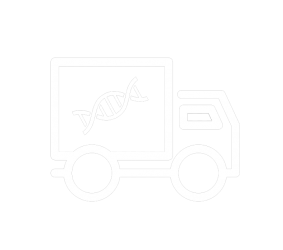In this section, we explain how our state of the art DNA testing is completely conducted:
- A verified Phlebotomist will Drive to your location. [house, condo, apartment, car, truck, or any place you desire.]
- Fill out paperwork including Chain of Custody forms. For this part, the Name of all patients and DOBs must be provided. [also in NY State, by law a NY prescription is required. If you do not have one, we will provide it for you.]
- Take pictures of all patients and IDs [Based on NY rules and regulations Photo of Patient can suffice for ID, but Photo ID is ideal.
- All patients and Phlebotomist sign legal documents including Chain of Custody forms.
- Draw DNA ; This is done using a swab and taking the cells of the skin inside the mouth. It is known as a buccal swab for cheek cells.
note: NON-INVASIVE PRENATAL Paternity test is a bit different:
1. Draw [Mother’s] blood 2x Vials via venal venipuncture
2. draw alleged father’s DNA
3. Test using DDC our lab partner - Once everything prior is done to the utmost accuracy, we take payment.
- Begin testing, and within 3-6 business days, the result report is Generated. [We email and mail a hard copy directly to the patient.
For Prenatal testing: Results take 1-2 weeks to report due to Isolation of Fetal DNA time frame from the mother’s blood. - Results are reported via PCR genetic machines that sequence the DNA and match specific genetic markers. It is considered to be 99.9% accurate.
Notice: Test Dna Mobile does the entire collection/handles paperwork, and makes sure the testing gets completed in a timely manner.
Further details of the testing explained:
Test DNA Mobile does not do the actual testing, only the lab does, which are U.S government certified. These labs are DDC and DNA Solutions.
They have machines that read the DNA via PCR testing, also known as a polymerase chain reaction. This is a way to isolate specific segments of human DNA and compare them to another set of human DNA. Since scientists and researchers have proven over the years that a specific set of 22-23 genetic markers or systems represent DNA for paternity, that is what has been deemed as the golden standard, and is, currently, used to test an alleged father vs a child. Once the lab machine reads the markers between the patients and finds algorithmic and calculative probabilities it is able to report the results. For paternity, it is commonly reported 99.9% match or 0% match. In cases of 99.9% match, the alleged father cannot be excluded as the biological father, whereas if the results show a 0% match of the DNA systems, then the father can, in fact, be excluded as the biological father.
DEEPER DNA alleles or systems explained:
So you may see allele names, or STRs, aka Short Tandem Repeat such as the following:
D3S1358: This is a specific allele that has repeats of genetic code: [TAGA]n[TGA]0-1[TAGA]n[TAGG]0-1[TG]5
Now each person may have a particular STR with a specific size of the allele.
This size can range from 8 or 99 base pairs to 20 or 147base pairs [bps] Base pairs are specific segments of DNA labeled with thymine [T], adenosine [A], guanine [G], and cytosine [C].
When a DNA test is done, the lab will observe the system, for example, the (STR D3S1358), and find the size of the segment. If the size of this particular STR is similar from [alleged father for example, vs child] then this will be marked as a similar strand or segment of DNA that is matching. The probabilities are further broken down based on more repeating structures. For instance, an alleged father can have (STR D3S1358) sizes of 15 & 16, while on the other hand, the child can have (STR D3S1358) sizes of 15.3 & 16. Based on the algorithm this would add to the probability of a potential match in a relationship. This is because the majority of the DNA or genetic code is still overlapping or matching. This also adds to the probability reasoning on why DNA tests are never 100% match, but rather 99.9% accurate*.
During the paternity test, the lab does not test simply one (STR D3S1358) or genetic system but instead looks at 22,
These 22 systems all have different traits in terms of chromosome location and sizes. Over the years of researching paternal relationships, these 22 systems reflect the DNA of paternal biology based on mathematical calculations and matching of these specific genetic sequences.
When the DNA test results report 3 or more systems to have different sizes and therefore contains vast amounts of genetic codes to be different from alleged father to child, then the child will be determined to have a 0% probability of match and therefore would be assumed that the alleged father is excluded as the biological father.
To understand STRs or genetic systems further, you may click here.
Reading a LAB RESULT or DNA test report / How to read my Results :
For paternity testing: 99.9% matching means that the alleged father is the FATHER. However, 0% probability = He is NOT the father.
For maternity testing: Same as paternity testing 99.9% = mother, 0% = not the mother.
For siblingship test: = 90% and above = siblings. However: 10% > ___Your reading__ < 90% which means u have a result that is greater than 10% but below 90% this = GRAY area, not enough DNA evidence can suggest siblings of being positive nor negative. for these tests, additional family members of question are suggested to add to the test.
Avuncular : = same as siblingship Over 90% = match of aunt or uncle. under 10% it is not a match. Anything in between = gray area, not enough DNA provided within the circumstances.
Grandpaternity: same as an avuncular and siblingship explanation.


